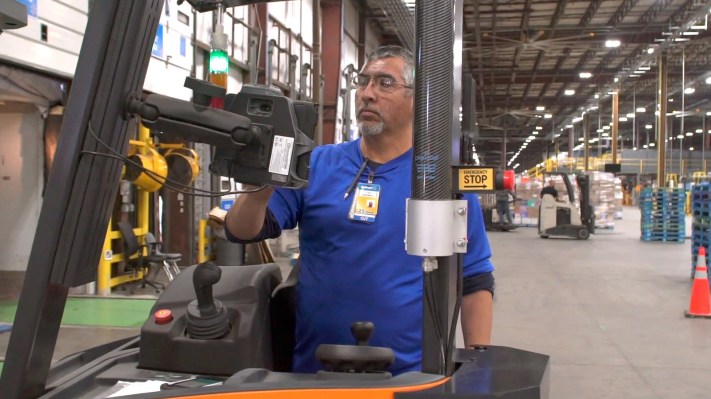The story of warehouse robotics is a story of attempting to keep up with Amazon. It’s been more than a decade since the online giant revolutionized its delivery services through its Kiva Systems acquisition. As Walmart works to remain competitive, it’s taking a more piecemeal approach to automation, through partnerships with a range of different robotics firms.
On Thursday, the mega-retailer announced a partnership with Fox Robotics, which brings 19 of the Austin-based startup’s robotic forklifts to its distribution centers. Today’s news follows a 16-month pilot, which found Walmart trialing the technology in Distribution Center 6020.
That Florida distribution center is the first of what the company calls its “high-tech DC.” These are warehouses where it trials automation and various other technologies, before rolling them out to its wider channel of distribution and fulfillment centers. DC 6020 is the place where Walmart began trials with Symbotic’s package sortation and retrieval technologies.
Following that successful trial, Walmart announced plans to roll out the technology to all 42 of its Regional Distribution Centers — that was nearly double the original target of 25. This week’s news is more modest, targeting four high-tech DCs, but if things go well, the retailer will order more.
Robotic forklifts are emblematic of a brownfield approach to automation, which is to say that the company is effectively retrofitting existing warehouses with technology, rather than building that space ground-up around the tech. It’s certainly a faster and less expensive approach, though there may be trade-offs in the end.
So, why automate forklifts? In addition to efficiency, properly automated systems bring an added sense of safety. Around 95 people are injured by forklifts each day in the U.S. Imagine driving a piece of heavy machinery with blind spots and two massive metal prongs jutting out the front, and you can start to see why they’re potentially very dangerous — particularly in tight spaces with a lot of human workers hanging around.
